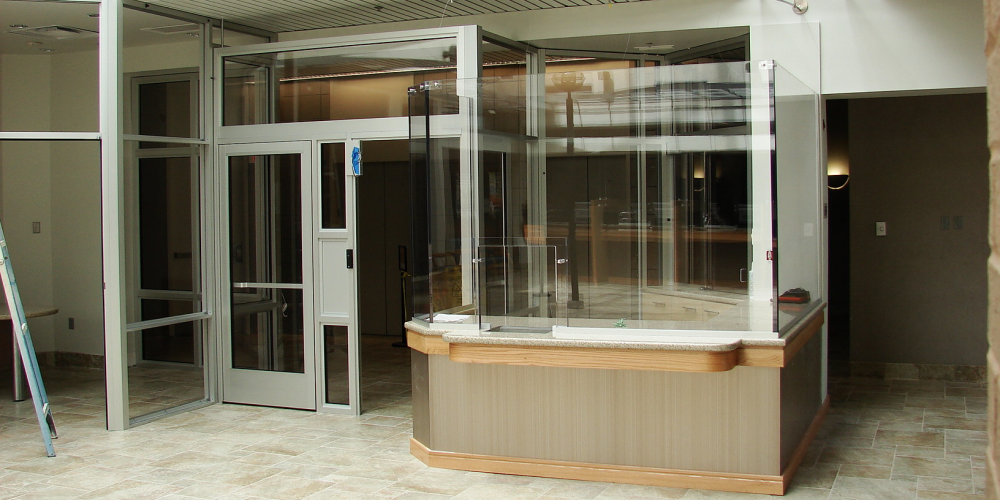When it comes to the verbiage of the physical security world, it’s easy to be confused. You might know the end goal of an individual security project, but finding the right materials/solutions to reach those goals can be challenging. One point of confusion we often encounter is the difference between security glass rated for forced entry and ballistic-rated glass. Because the word “bulletproof” is used in everything from car windows to song lyrics, it can be hard to know what it actually means in a technical sense and how it compares to other terms like forced-entry and bullet-resistant glass. Let’s explore the differences between these two protective options: how they're defined, how they’re utilized, and how to decide on the best solution for your project’s needs.
Two Different UL Standards
Although the materials that make up their compositions may be similar, forced-entry and bullet-resistant glass are tested to different specifications and protect against two separate threats. Architects, glaziers, and contractors need to be aware of these differences in order to choose the right materials for their projects, but end-users should also know the difference so they can be confident that their people and property are properly protected.
Besides the difference in name, glass rated for forced-entry (UL 792) and ballistic-rated glass (UL 752) have two entirely different UL standards. In our previous blog, we discussed the finer points of these standards, as well as the specific environments in which these standards are tested. While it is possible for a product to carry both ratings, it is not required, and it’s important to understand the level of protection being offered when planning a security project.
Material Compositions
Whereas forced-entry glass is generally made of polycarbonate, ballistic glass offers multiple options such as acrylic, layers of polycarbonate, or glass-clad polycarbonate. Ballistic glass is commonly available at eight different UL levels of protection to meet your safety needs. Levels 1 through 3 protect against handguns, while higher levels will stop bullets from high-powered rifles. Download our infographic on the 8 Levels of Bullet-Resistant Glass for a full breakdown of the UL levels.
How are they Used?
Designed specifically to delay intruders, you’ll typically find forced-entry glass protecting showroom and display windows, as well as the exterior windows of government offices and financial institutions. Because forced-entry glass is not designed to stop bullets, this type of security glass is most beneficial in situations where people are not present, and property damage or theft are the primary concerns.
While nothing is truly “bullet proof,” ballistic-rated glass is designed to stop bullets. Using the UL 752 bullet-resisting products standard, bullet-resistant glass is put through rigorous testing to determine the quantity and caliber of bullets it will stop. While a side-effect may be to delay an intruder, ballistic-rated glass doesn’t always carry a specific rating for that purpose.
Note: When researching different types of security glazing, you may encounter information on aftermarket security films that can be applied to pre-existing windows. Window security film is made up of one or more layers of polyester film that has been laminated together with unique adhesives, and commonly ranges in thickness from 4 mm to 8 mm or higher. Sometimes marketed as “shatterproof,” these films can work to delay an intruder. But because they do not stop bullets, they are not appropriate for projects where protecting people is a consideration.
What’s the Right Choice?
How do you decide what the right choice is for your project? It depends on your security goals and who or what you’re protecting. Forced-entry glass is fitting if you are primarily concerned about property protection and are looking to delay the criminal until law enforcement arrives. Ballistic glass protects both people and property.
As mentioned earlier, aftermarket security films can provide some benefit, but ultimately they will not stop bullets. To better understand why these films don’t offer ballistic protection, watch our live fire demonstration comparing security window film to our bullet-resistant glass. You can also download our infographic comparing the two, discussing additional differences, best applications, and the average costs for implementing either into a building security plan.
If you have questions or want to get started with a specific project, contact our ballistic security experts today. With decades of experience in the industry, our team knows how to best approach any security challenge, and we look forward to helping provide you with the right solution.

